Joseba Eskubi
"I am interested in that knot of tension between grotesque atmospheres and the delicacy of the figures.... to ensure that the sinister does not devour the possibility of a more friendly vision."
Joseba Eskubi (Bilbao, 1967) graduated from the Faculty of Fine Arts of the University of the Basque Country in 1991. He soon joined the Painting department as a professor, where he continues to this day. Recent exhibitions include Albertz Benda gallery, New York; Ohsh projects, London; Dunferline, Fire Station Creative; The Curators Room, Amsterdam; Galleria Napa and Studio Mustanapa, in Rovaniemi, Finland; Ana Mas Projects, Barcelona; Galería Alegría, Barcelona; Espacio Marzana, Bilbao; Galería Esther Montoriol, Barcelona; Galería Fúcares, Almagro; Museo de Reproducciones de Bilbao; and Oratorio de San Mercurio, Palermo.
MEPAINTSME: What were your early art experiences growing up? Did you always have an interest in art?
JOSEBA ESKUBI: I remember that since I was a child I liked drawing and spent a lot of time absorbed in this activity. I came into contact with the technique of oil painting through my father, as he was also a painter. From those beginnings I have continued with it until today. I think it would be difficult for me to do without painting, it’s an experience that reconstructs my contact with the world, it intensifies it.
MPM: Your paintings are very unique, yet they also embrace Spain’s rich artistic history. Are there any particular Spanish artists that you would say have made a great impression on you as an artist?
JE: I have been influenced by many artists. Goya's painting, for example, has always been a constant reference; from the dazzling joy of his tapestries to the sombre works of his last years. I am also fascinated by Dalí's early paintings, the representation of all those putrid forms. Another Spanish artist who interests me a lot is Óscar Domínguez— his work has a strange magnetism, it seems that the landscape metamorphoses to incredible limits.
MPM: I came upon a series you did of classical-like portraiture that had been desecrated by a barrage of heavily painted brushwork, where only portions of the underpainting (an eye or nose) remain recognizable. As different as these are from your current work, so many elements are there — the Baroque sense of light, the physicality of the paint, as well as the portrait. How would you describe your evolution as a painter from your early works to now?
JE: Yes, a few years ago I carried out a series of interventions on reproductions of classical paintings, trying to transform these images until they lost their initial meaning. This painting on painting left certain areas of the original image exposed, as a reminder of that initial layer. I think my work has evolved from a baroque gesture, with a certain drama, to the current work where everything is more synthetic and a certain humor is perceived. The works have become more concise, they have gone from a gestural dispersion to a greater expressive economy. On the other hand, the masses have begun to have eyes and mouths, and in this way, express certain links and affections between them. It’s very curious to see how in the end everything ends up connecting, many of the elements that I currently work on had already appeared in my youth. It's like there's finally the same question posed from different angles.
MPM: I first came across a painting of yours a number of years ago. The painting was unmistakably yours, yet the central figure could be described as more grotesque. Even with its evolutions, your work continues to balance on this razor’s edge between entropy and beauty. Can you talk a bit about this dichotomy in your work?
JE: I am interested in that knot of tensions between grotesque atmospheres and the delicacy of the figures. I try to ensure that the sinister does not devour the possibility of a more friendly vision of the scene. There is something astonishing when we see a doll abandoned in the trash, its smile still remains, as if it still retained some of the warmth of a home... it’s a similar sensation that I seek in painting, a threshold between laughter and tearfulness.
MPM: There’s also that undercurrent of theatricality in your work. Do you consider your subjects to be performing in a sense?
JE: There is a theatricality that perhaps comes from the use of formal resources closely linked to illusionist representation (shadows, ground, line, volumes...) This code reinforces the architectural framework in which the figures are inscribed, the painting as a cube that projects a puppet show. I try to make each shape gain a certain credibility and weight, to stand out from the background and have a strong presence in the center of the composition. On many occasions the figures seem like different actors but united in a kind of genealogy that brings them together in a large family.
MPM: With your subjects, there's almost a sense that we are witnessing a mutation of sorts, as though we are privy to their evolution in hyper-speed. Do you see them as embodying the ups and downs and back and forth that occur through the course of the painting?
JE: The figures don’t have a previous design, the drift of the process itself marks the direction to follow. I generally begin with a series of spots that throughout the session acquire different possibilities. On many occasions, I turn the painting around to surprise myself with a new composition... what was previously a head, for example, becomes a hole... sometimes you have to distract yourself to redirect expectations and get excited about what you find. I am interested in the figure appearing in a certain conflict with its own form, as if there were another body inside it that was pushing it and making its way outwards, opening fissures than communicate these different identities. The eyes and mouths multiply, creating a labyrinth of beings. The flow of matter, the continuous metamorphosis of things is something that always hovers over my work.
MPM: Although these characters are unrecognizable, the spaces they inhabit feel grounded in an earthly light and recognizable places, like seascapes, which only enhance their weirdness. Would you care to talk about this?
JE: These landscapes emerge from an abstract device, the colors and shapes don’t respond to a naturalistic approach, but instead try to create dreamlike atmospheres, where figures wander through cottony surfaces and seas of magma. I am interested in considering these spaces as landscapes of painting rather than as representations of a specific place.
MPM: You are quite prolific as a painter - how is your studio set up? Are you working on one painting at a time or multiples?
JE: I normally work on small-format works, and this allows me, in each session, to almost always make one or several paintings. I usually work on different works at the same time. Each painting has the next one in its germ, there is never a totally definitive one, and thanks to that continuity, the act of painting is linked to the life process itself.
MPM: Could you describe a typical studio day? What time do you generally start? What is the atmosphere in your studio? Do you listen to Music while working, and if so, what’s currently on your playlist?
JE: I usually start working early, around 8:30. I have found that a profitable session should last at least three hours, since there are always turning points and struggles in the process, and having enough time is essential. I like working in the morning much more, in the evening I feel a certain uneasiness and the studio begins to be a somewhat more disturbing space, so I almost always take advantage of the first hours of the day. I like many types of music, I am especially attracted to songs with a slow, enveloping and atmospheric rhythm.
MPM: Your references to performance also make me think of films like Eraserhead and The Thing. Would you say films like these, or others, have had an impact on your work?
JE: Eraserhead is awesome, it’s really a hypnotic experience. I especially like Miyazaki's animated films, his fantasy is always surprising.
MPM: Thank you for talking today. Aside from your current show at our gallery do you have any other shows or projects you’d like to mention?
JE: In February I have a group exhibition at the Sabato Angiero Gallery in Saviano, Naples, and next year I have a solo exhibition at the Centro Párraga in Murcia.
Joseba Eskubi’s work is currently on view at MEPAINTSME Gallery.


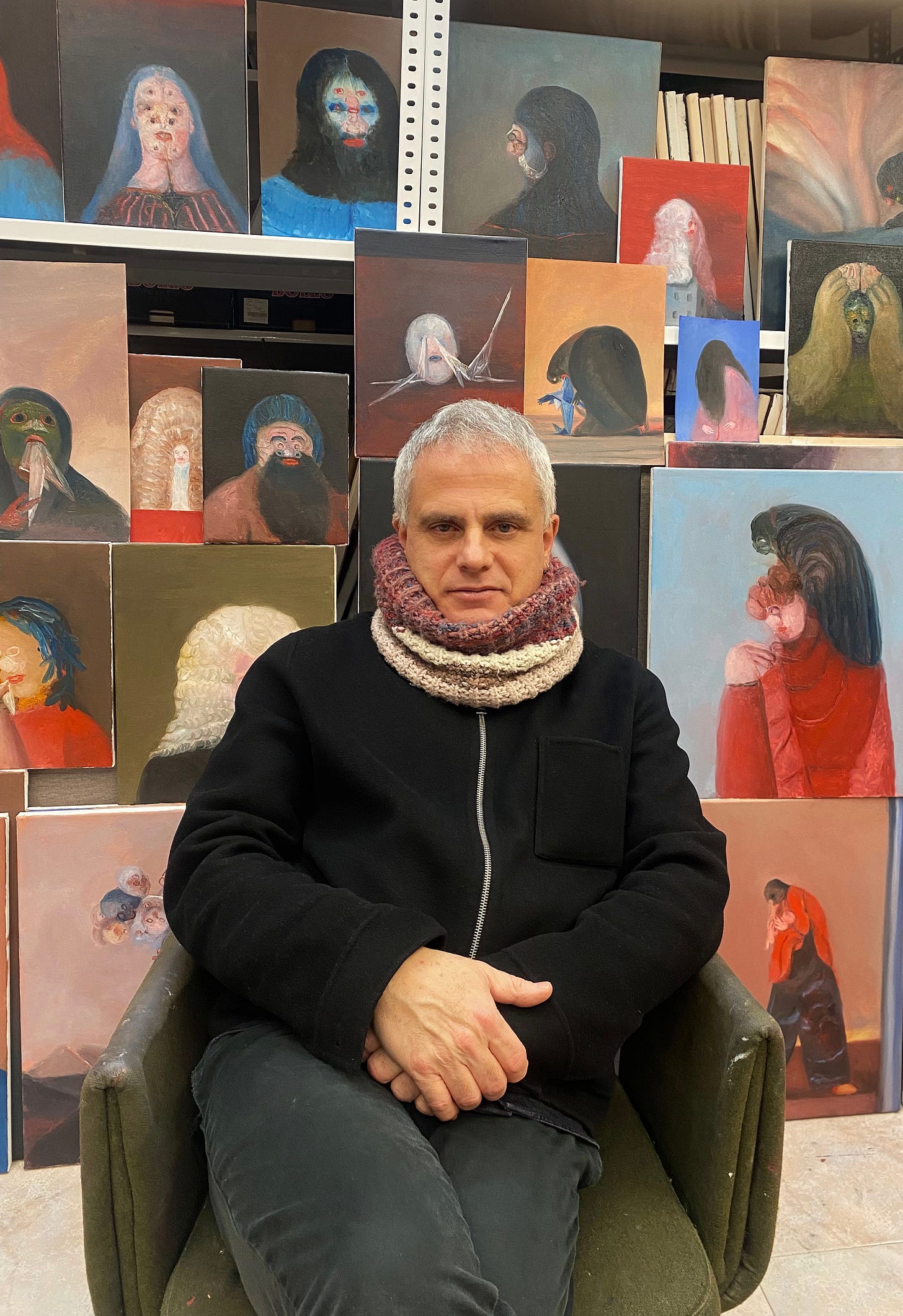
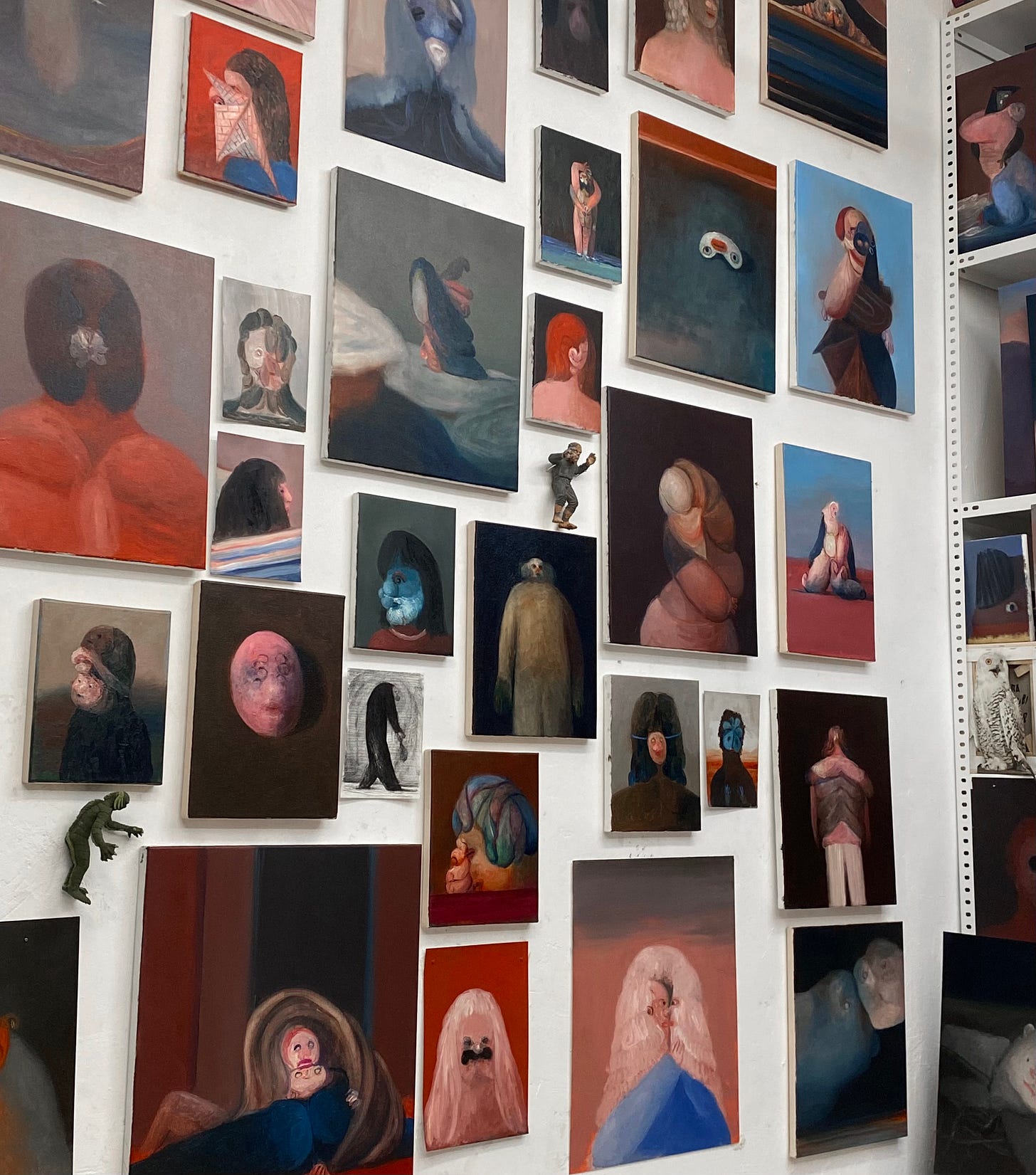
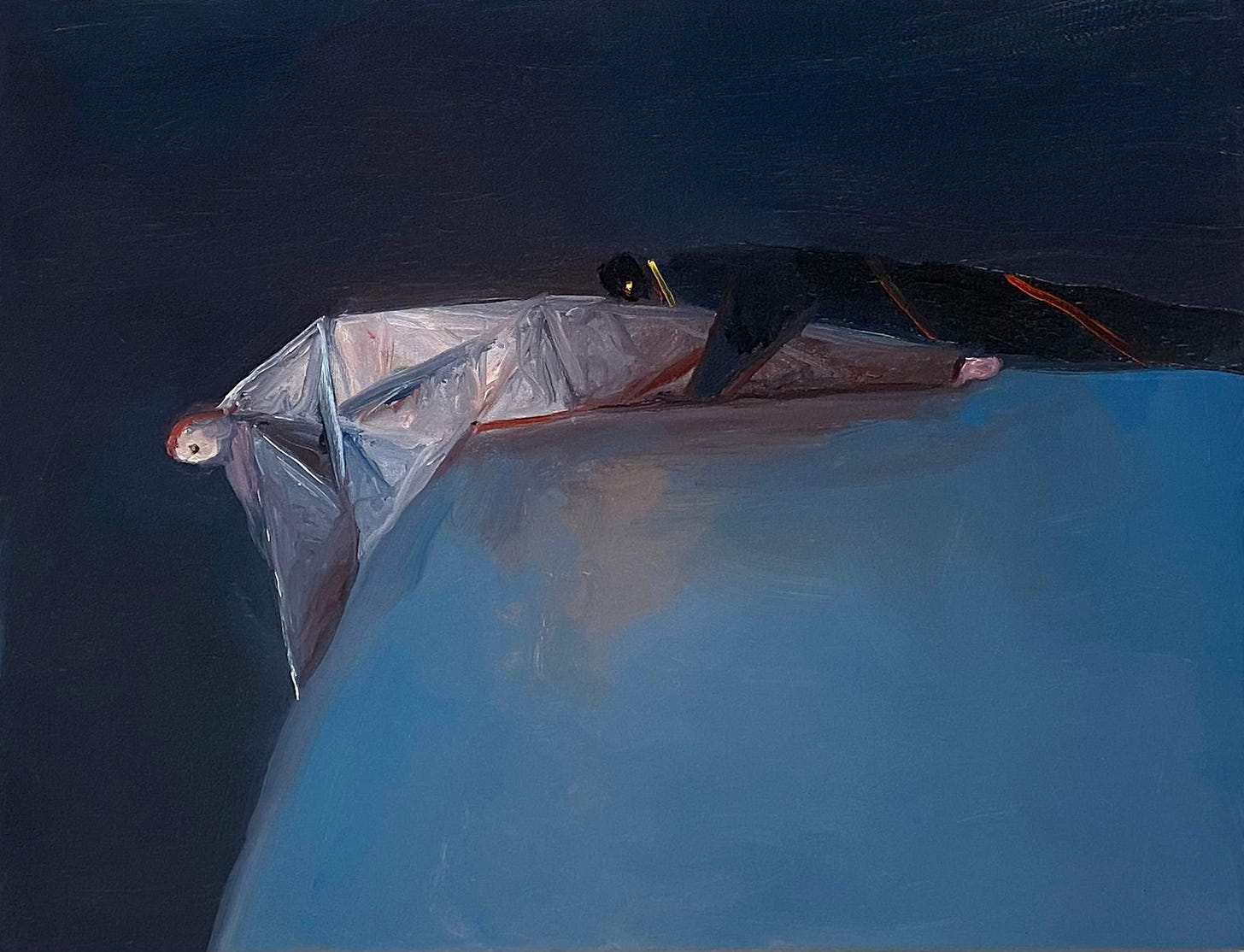
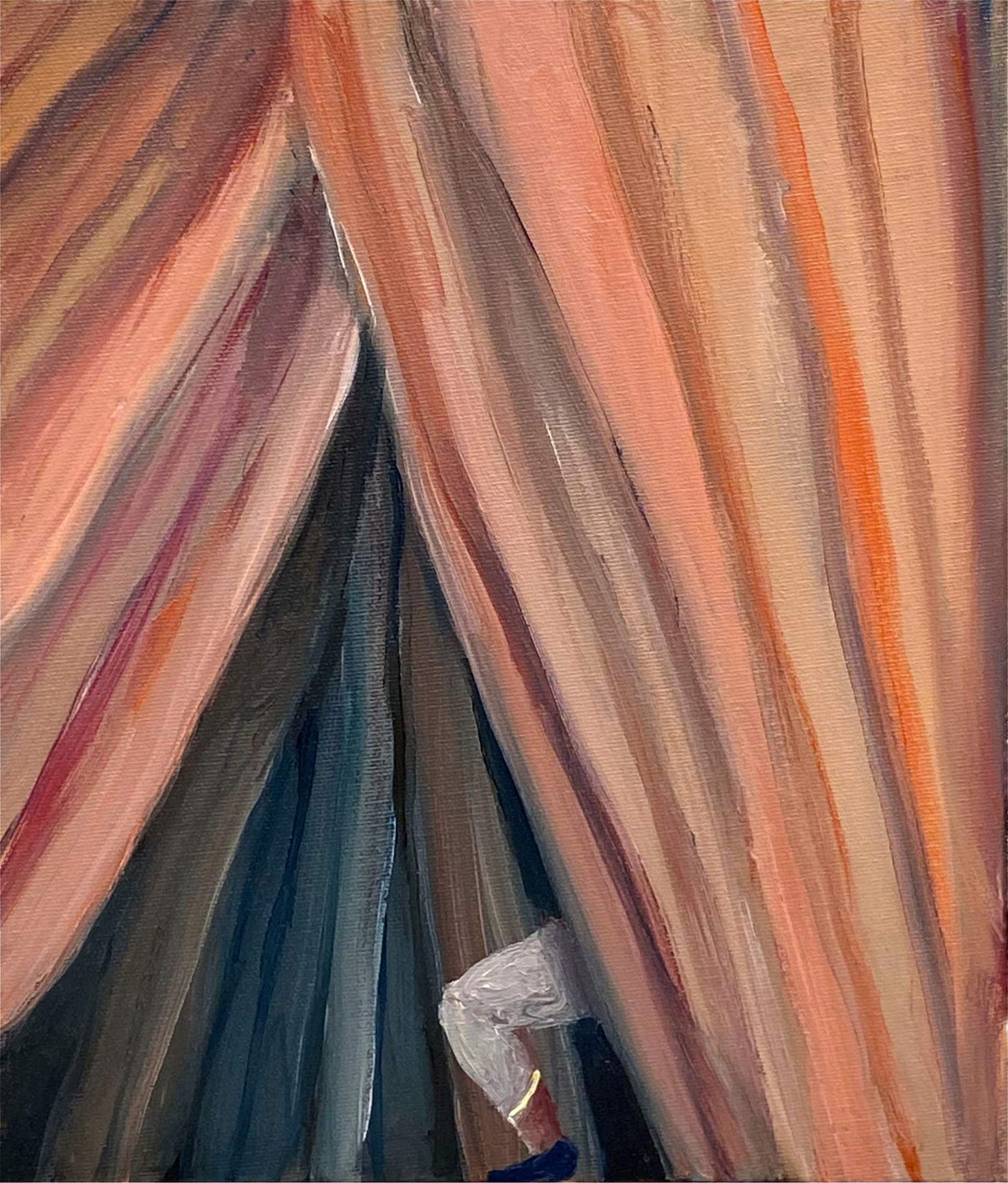
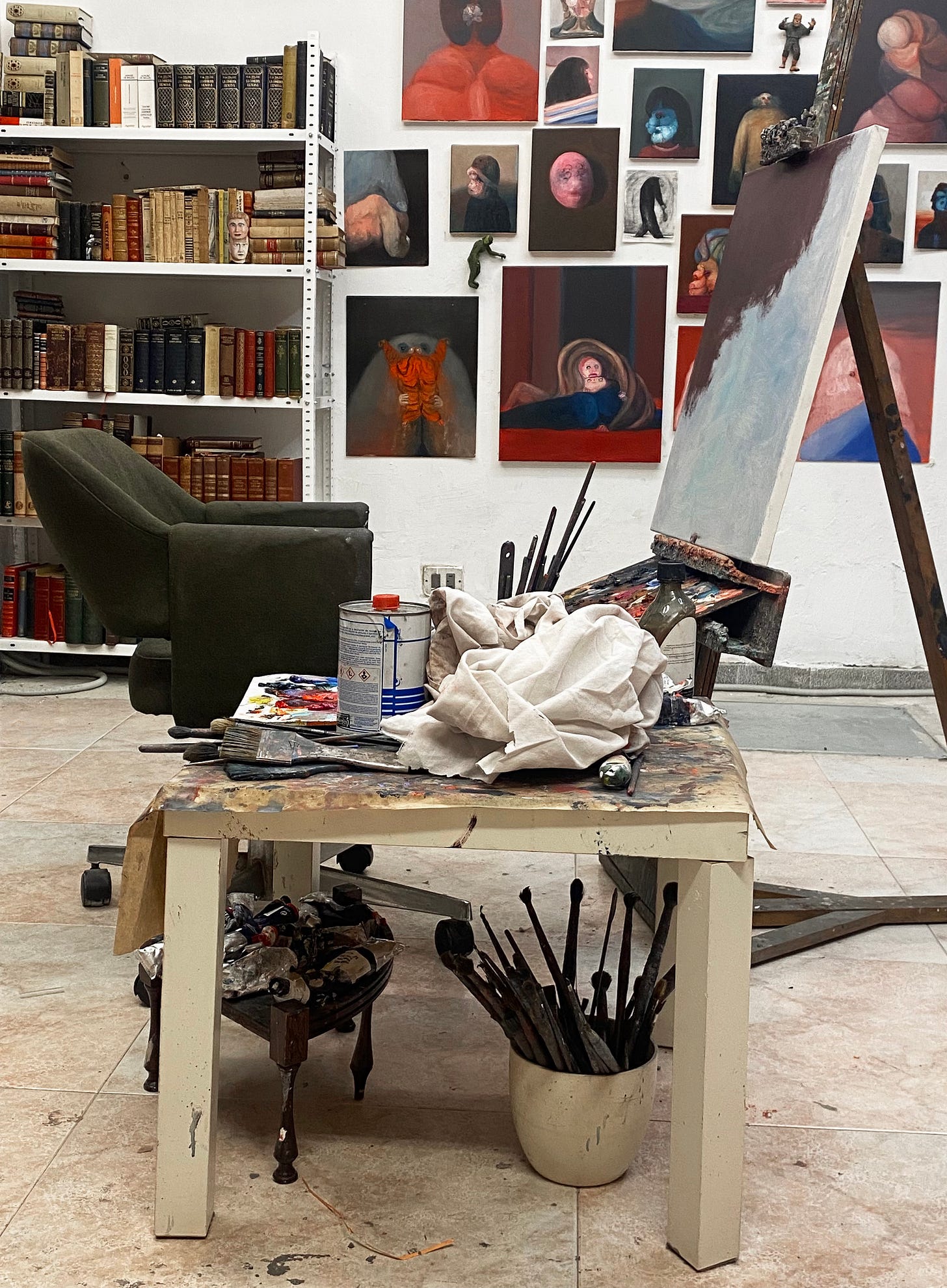
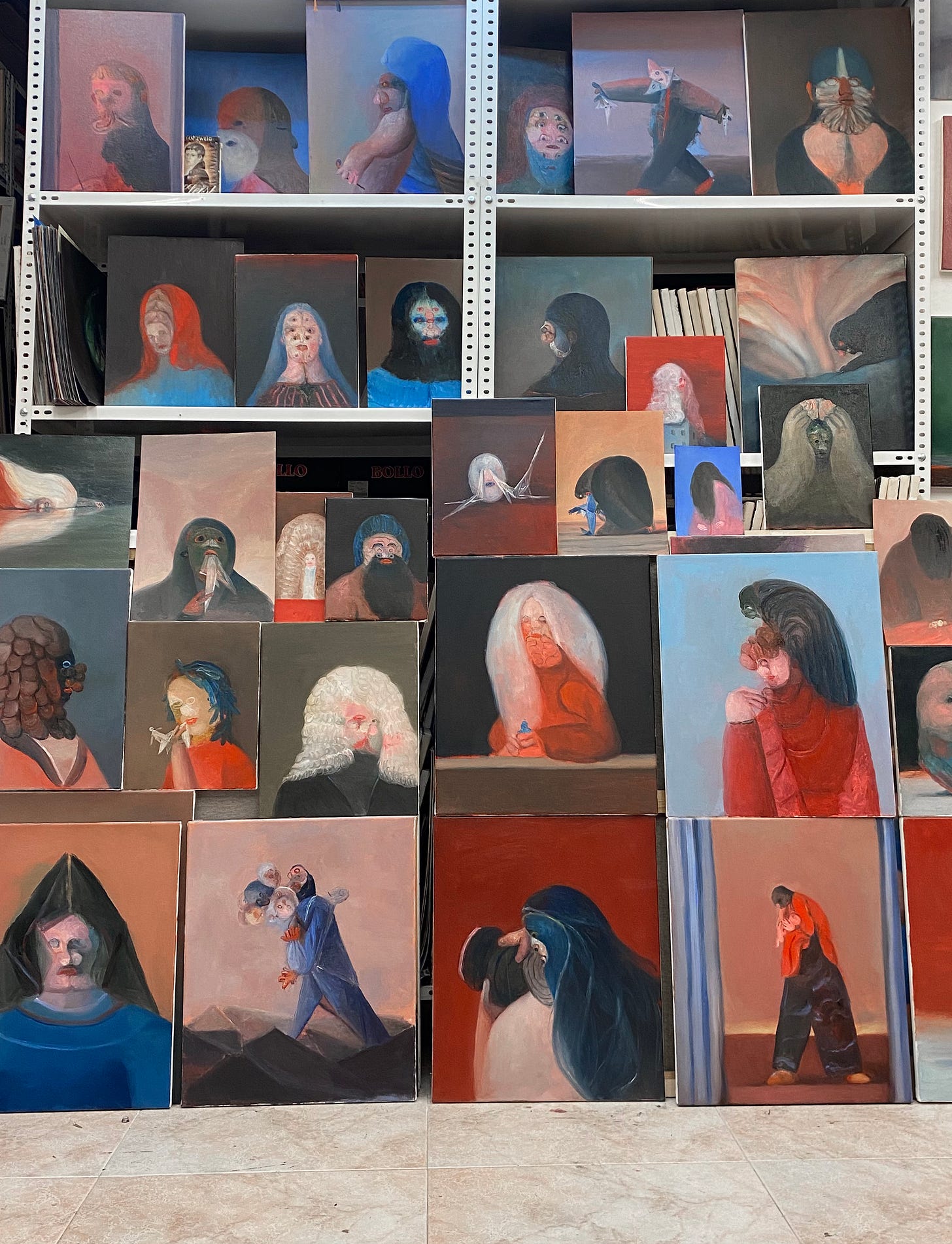
Nice studio shots. Love his work but didn’t know much about the artist. Thank you.
Great conversation! Joseba Eskubi's drawings are as sharp and incisive in exploring the threshold between laughter and tears.